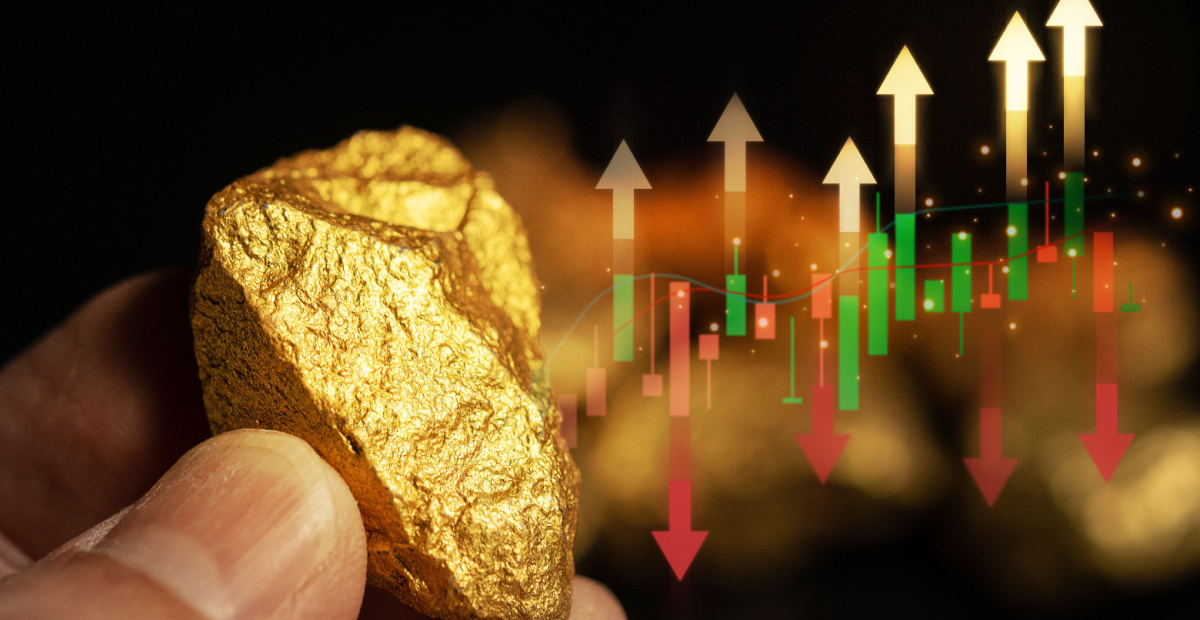‘Structural change’ in metals demand to push gold to $5k: Amundi

New commentary from European asset manager, Amundi, has predicted a “structural change” in investor appetite for precious metals will see the price of gold reach $5,000 an ounce by 2028.
A combination of several cyclical and structural factors have been credited as the core drivers of the recent gold rally, including “growing unpredictability in macroeconomic and geopolitical landscapes, demographic shifts, structurally higher demand from central banks (CBs), expectations of Fed rate cuts, a weak dollar and higher political uncertainty with the US shutdown”, which the commentary authors – three investment strategists from the Amundi Investment Institute, Lorenzo Portelli, Laura Fiorot and Jean-Baptiste Berthon – believe will continue over the next three years at least.
“In recent years, the rising demand for diversification has been the primary propeller of gold’s appeal,” Portelli, Fiorot and Berthon wrote in the commentary.
“Since 2022, central banks have sought to diversify their reserve currencies, which ultimately has supported the gold rally. Although the rapid pace of gold purchases appeared to slow in the first part of the year, the overall direction remains the one of accumulation.
“Overall CB net purchases for H1 2025 totalled to 415 tonnes, marking a 21 per cent decrease compared to H1 2024. Data from the World Gold Council shows that over the summer, CBs continued to build their gold reserves, although overall activity remains below the levels seen at the start of the year. Nonetheless, the trend of accumulation has continued, with seven central banks reporting increases in their gold holdings in August, while only one recorded a decrease.
“Beyond central banks, growing interest from institutional and retail investors has also fuelled the recent surge in gold prices. Heightened geopolitical risks have increased awareness of the need to manage portfolios in a world where the likelihood of inflation and commodity market shocks (such as those experienced in 2022) is higher. The rising risk of stagflationary scenarios, or situations where the traditional stock-bond correlation breaks down, has prompted reassessment of traditional strategic asset allocation (SAA).
“Investors are increasingly incorporating real assets, especially commodities, into their portfolios to enhance diversification and resilience; consequently, gold is gaining traction as a structural portfolio diversifer. Moreover, the erosion of confidence in sovereign debt is driving investors to gold, as recent fiscal policies characterised by rising deficits and explosive debt trajectories challenge the traditional safe-haven status of government bonds, such as US Treasuries.”
Similarly, the concurrent rise in popularity of and appetite for exchange traded funds (ETFs) as younger generations become increasingly more engaged with investment and wealth creation has also sparked the demand for gold.
“Demographic shifts are also influencing gold demand, as younger generations, with different investment preferences and a greater affinity for non-traditional assets and digital platforms, are more likely to support increased gold purchases,” the commentary said.
“On the back of this rising demand, global physically backed gold ETFs recorded their largest monthly inflow in September 2025, resulting in the strongest quarter on record at $26 billion. The trend of accumulation into gold ETFs appears well sustained, despite higher prices, with a more regionally diversified base. In our view, this trend is set to continue, as the allocation to gold is still very low.
“The combination of macroeconomic and geopolitical uncertainty, fiscal concerns, and evolving investor behaviour is driving renewed interest in gold, supporting an increased role for the metal in strategic asset allocation.
“Despite the tightening of monetary policies globally (characterised by higher interest rates and shrinking central bank balance sheets aimed at curbing inflation), the demand for gold remained robust. This resilience has led to a disconnection between real global interest rates and gold prices, with gold maintaining its appeal as a safe haven.
“This gold price rally signals more than just a market trend; it indicates, in our view, the beginning of a gradual transition from a US-centric international monetary system to a more multipolar one – a structural realignment in reserve management.”











Nice concept but not sure they can make it work given the tight timeframes. Kaplan is normally sooooo sloooow to…
Following your logic. Why should honest advisers be held reponsible for the fraud of the few?
Of course the AIOFP say this as it allows them to act with impunity. There seemed to be a lot…
What Peter is saying about the boycott makes complete sense. Ask yourself - do they have your back ? If…
...and yet unionised industry funds are blessed on the d!ck by ASICkjoke to keep raking in $ for Fee for…